Exploring Disaster Psychology - Dealing with Trauma Post-Disaster
Disasters, whether natural or man-made, can leave profound psychological scars on individuals and communities alike. The aftermath of such events is often a chaotic whirlwind of emotions, leaving many grappling with feelings they may not fully understand. This article delves into the intricate world of disaster psychology, focusing on the psychological impacts that follow catastrophic events, the coping mechanisms that individuals employ, and the critical importance of mental health support in the recovery process. Understanding these elements is not just beneficial; it’s essential for fostering resilience and healing in the face of adversity.
Understanding trauma is crucial for recognizing its effects on individuals and communities after disasters. Trauma can be defined as an emotional response to a distressing event, which can manifest in various forms. There are two primary types of trauma: acute trauma, which results from a single overwhelming event, and chronic trauma, which stems from prolonged exposure to distressing circumstances. Each type can have different psychological impacts, affecting how individuals process their experiences and move forward.
When a disaster strikes, it triggers a range of immediate psychological responses that can be bewildering. Many individuals may experience shock, a state of disbelief that can leave them feeling detached from reality. Others might find themselves in a state of denial, refusing to accept the severity of the situation. Confusion is also common; people often struggle to make sense of their emotions and the chaos around them. Recognizing these feelings is crucial, as they are the body’s natural way of coping with an overwhelming situation.
One of the most prevalent reactions following a traumatic event is Acute Stress Disorder (ASD). This condition can occur shortly after the disaster, manifesting as a range of symptoms that can significantly disrupt daily life. It’s important to highlight that ASD is distinct from other stress-related conditions, such as Post-Traumatic Stress Disorder (PTSD), which may develop later. Early intervention for ASD can be pivotal in preventing long-term psychological issues.
Identifying the signs and symptoms of ASD is essential for early recognition and intervention. Common indicators may include:
- Intrusive thoughts or flashbacks related to the event
- Heightened anxiety or irritability
- Sleep disturbances, including insomnia or nightmares
- Avoidance of reminders associated with the trauma
- Difficulty concentrating or making decisions
Being aware of these symptoms can help individuals and their loved ones seek appropriate support as soon as possible.
Effective treatment approaches for ASD can help individuals regain stability and begin the healing process. Therapeutic options often include cognitive-behavioral therapy (CBT), which focuses on changing negative thought patterns, and support groups that provide a safe space for sharing experiences. These methods not only facilitate recovery but also foster a sense of community among survivors, which can be incredibly healing.
The long-term effects of trauma can linger for years after a disaster, manifesting in various chronic mental health issues such as PTSD and depression. Individuals may find themselves reliving the traumatic experience, struggling with emotional numbness, or facing difficulties in relationships and daily functioning. It’s essential to recognize that these responses are not signs of weakness but rather natural reactions to extraordinary circumstances.
Community support plays a vital role in recovery from disaster-related trauma. Social networks can provide a sense of belonging and understanding, which is crucial for healing. The collective experience of a community can foster resilience, allowing individuals to share their stories and support one another through the recovery process. This shared healing can be a powerful tool in overcoming the psychological impacts of trauma.
Resilience is key to overcoming trauma, and it can be cultivated both personally and within communities. Strategies for building resilience include:
- Fostering strong social connections
- Encouraging open communication about feelings and experiences
- Promoting healthy coping mechanisms, such as mindfulness and physical activity
By focusing on these areas, individuals and communities can better equip themselves to face future challenges.
Access to mental health support services is crucial for disaster survivors. Resources such as counseling, hotlines, and community programs can provide immediate assistance to those in need. These services not only offer professional help but also create a network of support that can significantly aid in the recovery process.
Q: What should I do if I or someone I know is experiencing trauma after a disaster?
A: It's important to seek professional help. Contact a mental health professional or a support hotline to get guidance and support.
Q: How long does it take to recover from trauma?
A: Recovery varies for each individual. Some may heal quickly, while others may take years. It's essential to be patient and seek ongoing support.
Q: Are there any self-care strategies to help cope with trauma?
A: Yes, engaging in physical activities, practicing mindfulness, and maintaining social connections can be beneficial in coping with trauma.

The Nature of Trauma
Understanding trauma is crucial for recognizing its effects on individuals and communities after disasters. Trauma can be defined as a psychological response to a deeply distressing or disturbing event that overwhelms an individual’s ability to cope. It can manifest in various forms, affecting mental, emotional, and even physical well-being. In the aftermath of catastrophic events, such as natural disasters, terrorist attacks, or personal tragedies, people may experience trauma in unique ways.
There are different types of trauma that individuals may face during and after such events. These can include:
- Acute Trauma: This type arises from a single, overwhelming event, like an earthquake or a violent incident.
- Chronic Trauma: This occurs due to repeated and prolonged exposure to distressing events, such as ongoing domestic violence or living in a war zone.
- Complex Trauma: This involves exposure to multiple traumatic events, often of an invasive or interpersonal nature.
Each type of trauma can lead to various psychological effects, impacting how individuals process their experiences. For instance, acute trauma might lead to immediate reactions like shock and confusion, while chronic trauma can result in long-term mental health issues, including anxiety and depression. Understanding these distinctions is essential for providing appropriate support and interventions.
Moreover, the context in which trauma occurs plays a significant role in shaping its impact. Factors such as age, previous experiences, and social support systems can influence how a person responds to trauma. For example, children may experience trauma differently than adults, often manifesting symptoms through behavioral changes rather than verbalizing their feelings. This highlights the importance of tailored approaches to trauma recovery.
In summary, recognizing the nature of trauma is the first step toward effective recovery. By understanding the different types and contextual factors that contribute to trauma, we can better support individuals and communities as they navigate their healing journeys.

Immediate Psychological Responses
When a disaster strikes, it’s like a bomb going off in the lives of those affected. The immediate aftermath can leave individuals reeling, grappling with a whirlwind of emotions and reactions that can feel overwhelming. Shock, denial, and confusion are just a few of the common psychological responses that surface in the wake of such traumatic events. Imagine being in a state where everything around you feels surreal, as if you’re watching a movie rather than living through a nightmare. This disorientation is a natural response to the chaos that has just unfolded.
It’s essential to recognize that these reactions are not just signs of weakness or vulnerability; they are part of the body’s built-in defense mechanism. When faced with trauma, the mind often resorts to protective measures to shield itself from the emotional pain. For instance, a person may find themselves in a state of denial, convincing themselves that the disaster didn’t really happen or that it won’t affect them. This denial can serve as a temporary buffer, allowing individuals to process their feelings at their own pace.
As we explore these immediate psychological responses, let’s not overlook the importance of acknowledging and validating these feelings. Many individuals may feel isolated or misunderstood during this time, which can exacerbate their emotional distress. It’s crucial for friends, family, and community members to provide a supportive environment where affected individuals can express their feelings without judgment. A simple “It’s okay to feel this way” can go a long way in helping someone feel seen and heard.
In the context of disaster psychology, understanding these immediate responses is vital for effective intervention. The sooner we can identify and address these reactions, the better the chances for recovery. For example, a person exhibiting signs of acute stress may benefit from talking to a mental health professional who can guide them through their emotions and help them develop coping strategies. Here’s a quick look at some common immediate responses:
| Response | Description |
|---|---|
| Shock | A state of numbness or disbelief, where individuals may feel detached from reality. |
| Denial | Refusal to accept the reality of the situation, often as a protective mechanism. |
| Confusion | A sense of disorientation, making it difficult to think clearly or make decisions. |
Recognizing these signs can be the first step toward recovery. After all, how can we heal if we don’t even acknowledge the wounds? It’s like ignoring a cut; it won’t heal on its own without proper care. By understanding these immediate psychological responses, we can better support ourselves and others in navigating the tumultuous waters of post-disaster recovery.
In conclusion, the immediate aftermath of a disaster is a complex emotional landscape. It’s a time filled with uncertainty, fear, and a desperate need for connection. By fostering an environment of understanding and support, we can help individuals process their trauma and begin the journey toward healing. Remember, it’s okay to not be okay, and seeking help is a sign of strength, not weakness.
- What should I do if I experience shock after a disaster? It's important to talk to someone about your feelings, whether it's a friend, family member, or mental health professional.
- How long do immediate psychological responses last? These responses can vary greatly from person to person, but they typically diminish over time. If they persist, it may be beneficial to seek professional help.
- Can I help someone who is in denial? Yes! Providing a supportive and non-judgmental space for them to express their feelings can encourage them to confront their reality when they are ready.
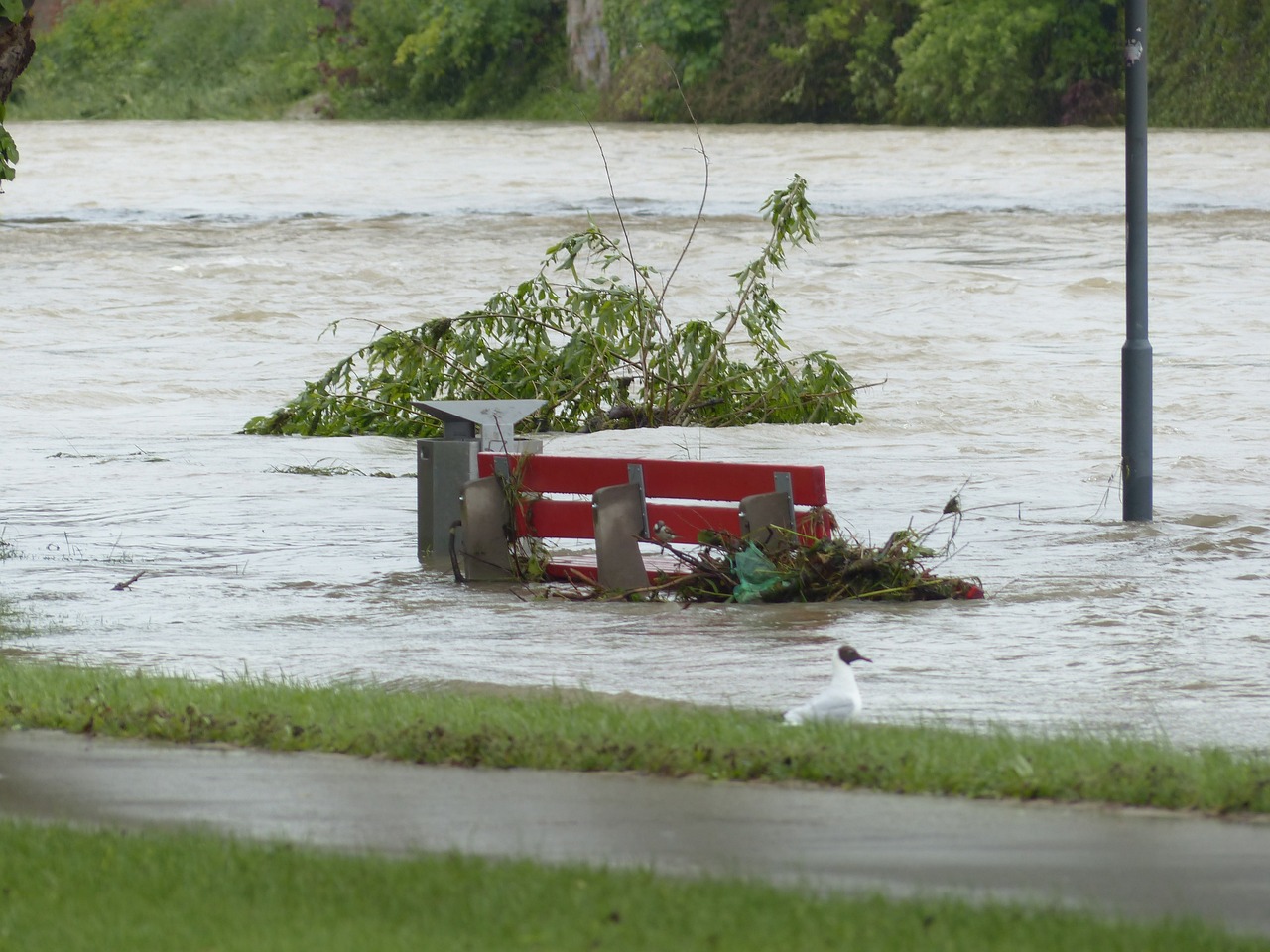
Acute Stress Disorder
Acute Stress Disorder (ASD) is a psychological condition that can emerge shortly after a traumatic event, often within the first month following the incident. Imagine being in a car accident; the immediate aftermath can feel like a whirlwind of emotions, confusion, and fear. This is where ASD steps in, manifesting as a range of symptoms that can disrupt daily life. It’s crucial to understand that while everyone reacts differently to trauma, ASD serves as a reminder that some responses are more intense and require attention.
Individuals experiencing ASD may find themselves grappling with feelings that can be overwhelming. Common symptoms include intrusive memories of the event, heightened anxiety, and emotional numbness. These reactions can leave one feeling trapped in a cycle of distress, making it difficult to function normally. It's like being stuck in a fog; you know there's a way out, but the path isn't clear. Recognizing these feelings is the first step toward recovery, as it allows individuals to seek the help they need.
One of the key aspects of ASD is its distinction from other stress-related conditions, such as Post-Traumatic Stress Disorder (PTSD). While PTSD develops after a longer duration, ASD can present itself almost immediately. This difference is significant because timely intervention can lead to better outcomes. Early treatment can help prevent the escalation of symptoms into chronic conditions, which is why awareness and education about ASD are vital.
For those who may be unaware of the signs of ASD, here’s a brief overview:
- Intrusive thoughts or flashbacks of the traumatic event
- Severe anxiety and heightened arousal
- Emotional detachment or numbness
- Sleep disturbances, such as insomnia or nightmares
- Difficulty concentrating or focusing on tasks
Recognizing these signs early on can lead to more effective treatment approaches. If you or someone you know is exhibiting these symptoms, it's crucial to seek professional help. Treatment options may include cognitive-behavioral therapy (CBT), which helps individuals process their trauma and develop coping strategies. Support groups can also be beneficial, providing a safe space for individuals to share their experiences and feelings.
In conclusion, understanding Acute Stress Disorder is a significant step towards healing after a traumatic event. By recognizing the symptoms and seeking timely intervention, individuals can regain a sense of control and move towards recovery. Remember, it’s not just about surviving the trauma; it’s about learning to thrive in its aftermath.

Signs and Symptoms
Recognizing the signs and symptoms of Acute Stress Disorder (ASD) is crucial for timely intervention and support. After a disaster, individuals may experience a variety of psychological and physical symptoms that signal their struggle to cope with the traumatic event. These symptoms can manifest differently in each person, making it essential to pay attention to both emotional and behavioral changes.
Some common signs of ASD include:
- Intrusive Thoughts: Individuals may find themselves reliving the traumatic event through vivid memories or nightmares, making it difficult to focus on daily activities.
- Avoidance Behaviors: Many people will consciously or unconsciously avoid reminders of the trauma, which can include places, people, or conversations that trigger painful memories.
- Heightened Arousal: This can manifest as increased anxiety, irritability, or difficulty sleeping. The individual may feel on edge or experience exaggerated startle responses.
- Emotional Numbness: Some may feel disconnected from their emotions or surroundings, leading to a sense of detachment from friends and family.
- Physical Symptoms: These can include headaches, stomachaches, or other unexplained aches and pains, often as a physical manifestation of emotional distress.
It's important to note that these symptoms can arise within days of the traumatic event and may persist for weeks. If left unaddressed, they can evolve into more severe conditions such as Post-Traumatic Stress Disorder (PTSD). Recognizing these signs early on can make a significant difference in an individual's recovery journey.
Furthermore, the duration and intensity of these symptoms can vary widely among individuals. For some, the symptoms may dissipate within a few weeks, while others may find themselves struggling for much longer. This variability underscores the importance of seeking help from mental health professionals who can provide support tailored to each individual's needs.
In summary, being aware of the signs and symptoms of ASD is essential for both individuals and their loved ones. Early recognition can lead to timely interventions, fostering a path towards recovery and healing. If you or someone you know is experiencing these symptoms, reaching out for professional help is a crucial step in the healing process.
- What is Acute Stress Disorder?
Acute Stress Disorder is a mental health condition that can occur after experiencing or witnessing a traumatic event. It is characterized by symptoms such as intrusive thoughts, avoidance behaviors, and heightened arousal. - How long do symptoms of ASD last?
Symptoms of ASD can last from a few days to several weeks. If symptoms persist beyond a month, it may be diagnosed as PTSD. - What should I do if I recognize these symptoms in myself or someone else?
It’s important to seek help from a mental health professional. Early intervention can significantly improve recovery outcomes. - Are there effective treatments for ASD?
Yes, treatments such as cognitive-behavioral therapy (CBT), support groups, and medication can be effective in managing symptoms of ASD.
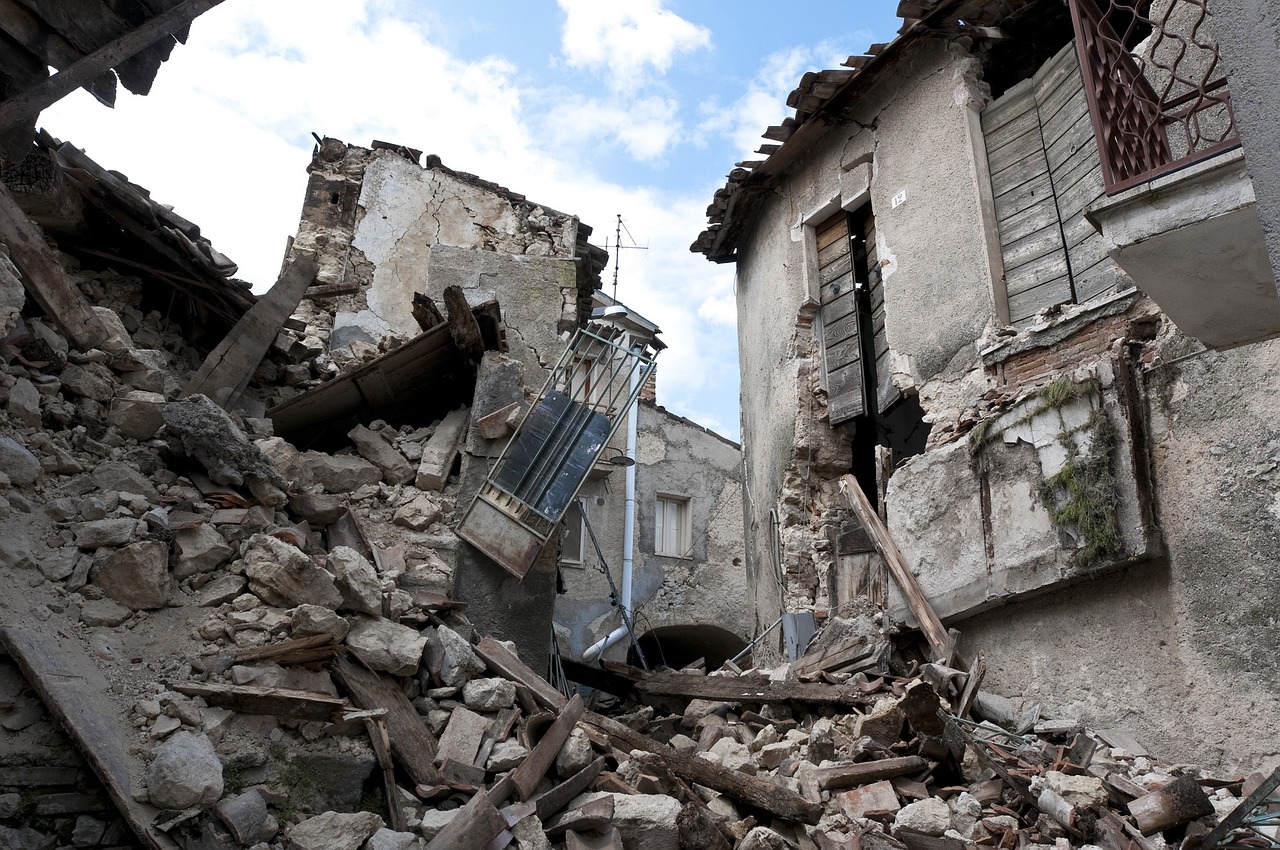
Treatment Approaches
When it comes to dealing with Acute Stress Disorder (ASD), timely intervention is crucial. Individuals who have experienced trauma need effective treatment approaches that can help them regain their emotional and psychological stability. One of the most widely recognized methods is Cognitive-Behavioral Therapy (CBT). This form of therapy focuses on identifying and altering negative thought patterns that can lead to distressing emotions and behaviors. By helping individuals reframe their thoughts about the traumatic event, CBT empowers them to develop healthier coping mechanisms.
In addition to CBT, support groups have proven to be invaluable for those recovering from trauma. These groups provide a safe space where individuals can share their experiences and feelings with others who understand what they are going through. The collective healing that occurs in these settings can foster a sense of belonging and reduce feelings of isolation, which are common after a disaster. It’s like having a lifeline thrown to you when you’re struggling to stay afloat in turbulent waters.
Another effective approach is exposure therapy, which gradually exposes individuals to the memories and triggers associated with their trauma in a controlled environment. This method helps reduce the power these memories hold over the individual, allowing them to process their experiences more effectively. It’s akin to slowly dipping your toes into a cold pool rather than jumping in all at once; it helps ease anxiety and build resilience.
Moreover, mindfulness and relaxation techniques can be beneficial in managing symptoms of ASD. Practices such as deep breathing, meditation, and yoga can help individuals ground themselves in the present moment, reducing feelings of anxiety and panic. These techniques serve as a reminder that, despite the chaos that may have ensued, there is still peace to be found within oneself.
It's also essential to consider the role of medication in treating ASD. While not everyone will require medication, some may benefit from antidepressants or anti-anxiety medications to help stabilize their mood during the recovery process. However, medication should always be accompanied by therapy to address the underlying issues related to trauma.
In summary, a combination of therapeutic approaches tailored to the individual's needs can significantly enhance recovery from Acute Stress Disorder. Whether through Cognitive-Behavioral Therapy, support groups, exposure therapy, or mindfulness practices, the goal remains the same: to help individuals navigate their trauma and reclaim their lives.
- What is Acute Stress Disorder?
Acute Stress Disorder is a condition that can occur in response to a traumatic event, characterized by symptoms such as anxiety, intrusive thoughts, and emotional numbness. - How soon after a traumatic event can ASD occur?
Symptoms of Acute Stress Disorder can develop within three days to four weeks following the traumatic event. - Can ASD lead to PTSD?
Yes, if symptoms persist for more than a month, ASD may evolve into Post-Traumatic Stress Disorder (PTSD). - What are the signs that someone may need help after a disaster?
Signs include persistent feelings of fear, helplessness, avoidance of reminders of the event, and significant changes in mood or behavior.
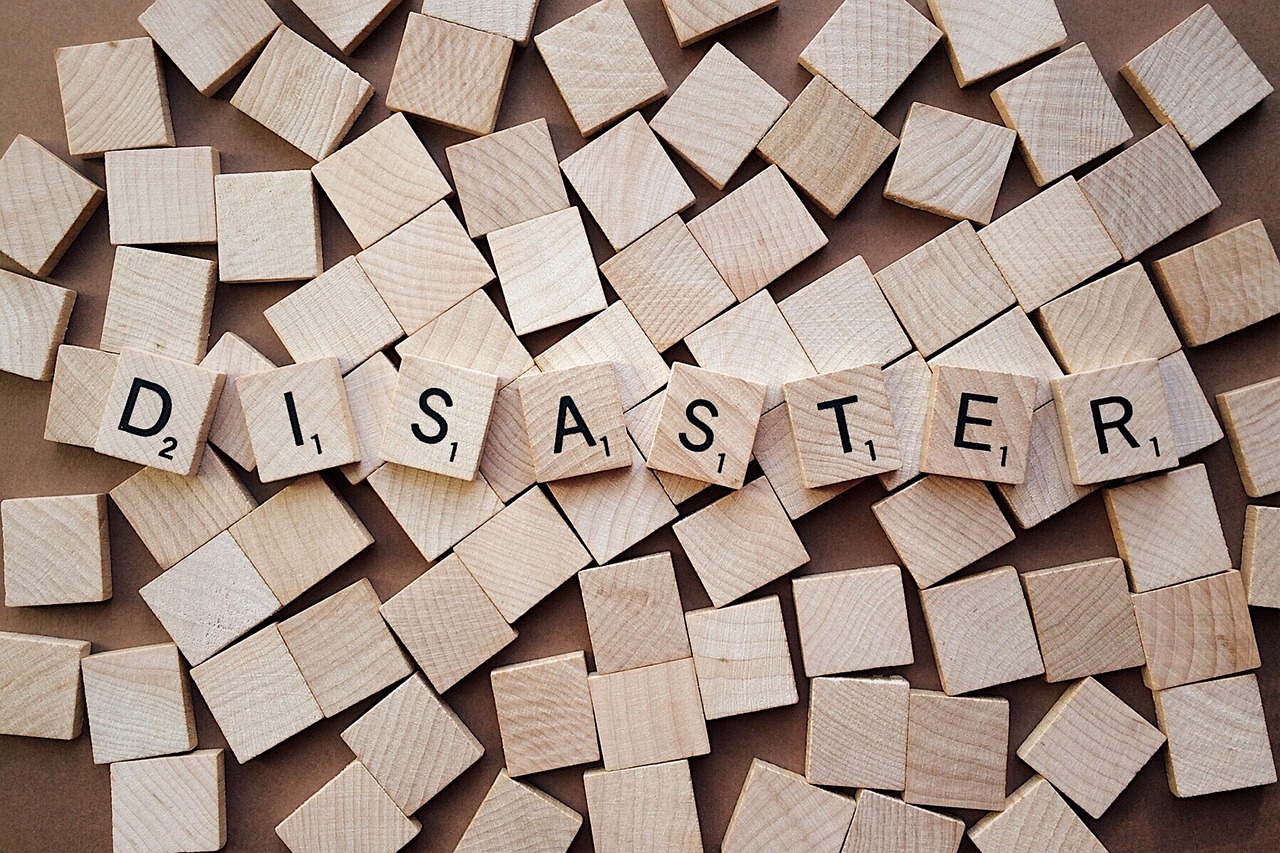
Long-Term Effects of Trauma
After a disaster strikes, the immediate chaos often overshadows the long-term consequences that linger long after the dust settles. The psychological effects of trauma can be profound and enduring, affecting not only individuals but also entire communities. It’s crucial to understand that trauma doesn’t just vanish; it can morph into chronic mental health issues that can haunt survivors for years, sometimes even decades.
One of the most common long-term effects is the development of Post-Traumatic Stress Disorder (PTSD). This condition can manifest in various ways, including flashbacks, nightmares, and severe anxiety. Survivors may find themselves reliving the traumatic event, feeling as if they are experiencing it all over again. This can lead to heightened levels of stress and fear, making it difficult to engage in daily activities or maintain relationships. The persistent nature of these symptoms can be debilitating, affecting not just the individual but also their loved ones.
Another significant long-term effect is the onset of depression. Following a disaster, individuals may experience a profound sense of loss—not only of loved ones and property but also of their sense of safety and normalcy. This feeling can lead to persistent sadness, hopelessness, and a lack of interest in activities once enjoyed. It’s as if a dark cloud looms over their lives, making it hard to see the silver lining.
Furthermore, unresolved trauma can lead to a variety of physical health problems. Research indicates that individuals who experience severe trauma are at a higher risk for conditions such as heart disease, obesity, and chronic pain. The connection between mental and physical health is undeniable; when the mind is burdened, the body often follows suit. It’s like a ripple effect, where one’s emotional state can directly impact their physical well-being.
In addition to these mental and physical health issues, survivors may also face social repercussions. The stigma surrounding mental health can lead to isolation, as individuals may feel reluctant to seek help or share their experiences. This isolation can exacerbate feelings of loneliness and despair, creating a vicious cycle that is hard to break. The importance of community support cannot be overstated; it serves as a lifeline for many, providing a network of understanding and compassion.
Ultimately, the long-term effects of trauma are complex and multifaceted. They require a comprehensive approach to recovery, one that addresses both the psychological and physical impacts of the experience. Early intervention and ongoing support are essential in helping individuals navigate their journey towards healing. As we delve deeper into the psychology of disaster, it becomes clear that understanding these long-term effects is vital for fostering resilience and recovery in affected populations.
- What is PTSD and how is it related to trauma?
PTSD, or Post-Traumatic Stress Disorder, is a mental health condition triggered by experiencing or witnessing a traumatic event. It can lead to severe anxiety, flashbacks, and uncontrollable thoughts about the event. - How can I support someone who has experienced trauma?
Listening without judgment, encouraging them to seek professional help, and being patient can significantly aid their recovery process. - Are there effective treatments for long-term trauma effects?
Yes, treatments such as cognitive-behavioral therapy (CBT), eye movement desensitization and reprocessing (EMDR), and group therapy have shown effectiveness in treating trauma-related conditions.
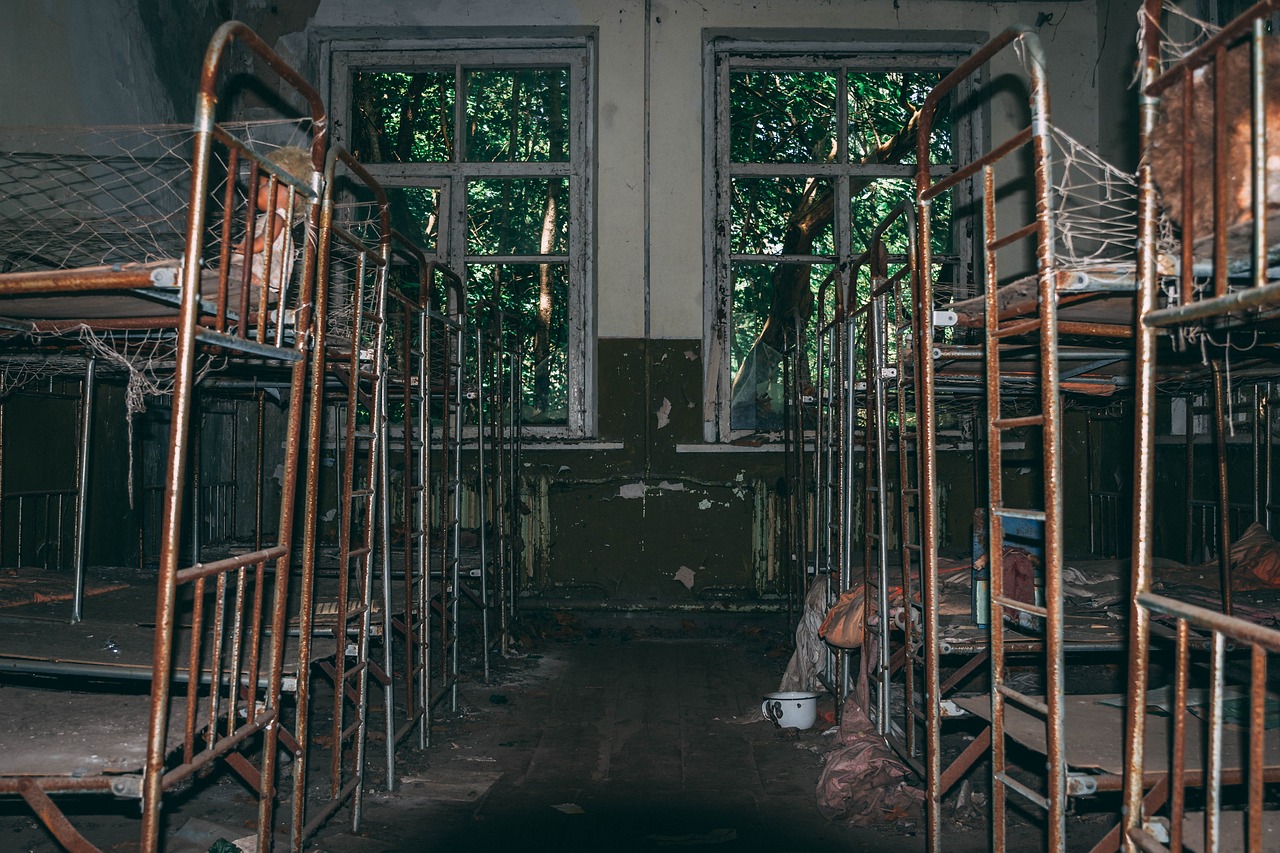
The Role of Community Support
When disaster strikes, the aftermath can feel like a heavy fog that envelops the entire community. In such times, the importance of community support becomes glaringly evident. It’s not just about individuals coping in isolation; it's about the collective strength that emerges when people come together. The bonds formed in these challenging moments can be a lifeline, providing emotional, psychological, and even physical support to those affected. Have you ever noticed how a simple act of kindness can ignite hope in someone’s heart? That's the power of community!
Community support manifests in various forms, from neighbors checking in on each other to organized relief efforts that provide food, shelter, and counseling. The synergy created by these actions fosters resilience among individuals who may feel overwhelmed by their circumstances. In fact, research shows that communities with strong social networks tend to recover more effectively from disasters. It’s like a safety net; the more robust the net, the less likely individuals will fall through the cracks.
One of the most profound aspects of community support is the emotional healing that occurs when people share their experiences. Talking about trauma can be incredibly cathartic, allowing individuals to process their feelings and begin to heal. This communal sharing can take place in various settings, such as support groups, community centers, or even informal gatherings. When people come together to share their stories, it not only validates their feelings but also creates a sense of belonging. It’s as if they’re saying, “You’re not alone in this; we’re in this together.”
Moreover, community support extends beyond emotional healing. It also includes practical assistance. For instance, local organizations may set up hotlines, provide counseling services, or organize volunteer efforts to help those affected by the disaster. These resources can be invaluable for individuals who may not know where to turn for help. Below is a table summarizing some key community support services often available after a disaster:
| Service Type | Description | Examples |
|---|---|---|
| Counseling Services | Professional mental health support for individuals coping with trauma. | Therapy sessions, support groups |
| Emergency Relief | Immediate assistance for basic needs such as food and shelter. | Food banks, temporary housing |
| Hotlines | 24/7 access to trained professionals for immediate support. | Crisis hotlines, mental health hotlines |
| Community Programs | Organized efforts to promote healing and recovery. | Workshops, community events |
In addition to these tangible resources, community support also cultivates a sense of hope. When individuals see their neighbors and community leaders coming together to help, it instills a belief that recovery is possible. This hope is crucial; it acts as a beacon of light in the darkest of times. It’s like planting seeds in a garden; with care and nurturing, those seeds can grow into something beautiful, symbolizing resilience and renewal.
Ultimately, the role of community support in the aftermath of a disaster cannot be overstated. It creates a framework for recovery, allowing individuals to rebuild not only their lives but also their sense of normalcy. So, the next time you witness a community rallying together, remember that it’s more than just a reaction to a crisis; it’s a powerful testament to the human spirit and our innate desire to connect and support one another.
- What are the benefits of community support after a disaster? Community support helps individuals feel less isolated, provides practical assistance, and fosters emotional healing through shared experiences.
- How can I get involved in supporting my community after a disaster? You can volunteer with local organizations, participate in community meetings, or simply check in on your neighbors to offer support.
- Are there professional services available for mental health support? Yes, many communities offer counseling services, hotlines, and support groups specifically designed for disaster survivors.

Building Resilience
Building resilience is like crafting a sturdy bridge over turbulent waters; it’s about developing the strength to withstand the storms of life, especially after experiencing a disaster. Resilience isn't just an innate trait—it's a skill that can be nurtured and strengthened over time. So, how do we go about this? It all starts with understanding that resilience is a combination of emotional, psychological, and social factors that help individuals bounce back from adversity.
One of the key aspects of building resilience is fostering strong social connections. Think of your friends and family as the ropes that hold your bridge together. When disaster strikes, having a solid support network can make all the difference. Surrounding yourself with people who understand your experiences and can offer emotional support is crucial. This can include not only friends and family but also community members who have gone through similar situations.
Another vital component is developing effective coping skills. These are the tools you can use to manage stress and navigate through tough times. Some effective coping strategies include:
- Mindfulness and Meditation: Practicing mindfulness can help ground you in the present moment, reducing anxiety and promoting emotional well-being.
- Physical Activity: Engaging in regular exercise releases endorphins, which are natural mood lifters.
- Creative Outlets: Expressing yourself through art, writing, or music can serve as a therapeutic release and help process emotions.
Additionally, it’s important to cultivate a positive mindset. This doesn’t mean ignoring the pain or challenges you face, but rather recognizing that setbacks are a part of life. Embracing a growth mindset allows you to view difficulties as opportunities for learning and personal development. You might ask yourself questions like, “What can I learn from this experience?” or “How can I use this to grow stronger?”
Moreover, resilience is often enhanced through practical problem-solving skills. When faced with challenges, being able to break them down into manageable steps can prevent feelings of being overwhelmed. Consider creating a simple action plan that outlines the steps you can take to address specific challenges, which can provide a sense of control amidst chaos.
Lastly, don't underestimate the power of self-care. Prioritizing your physical and mental health is essential for building resilience. This can include getting enough sleep, maintaining a balanced diet, and engaging in activities that bring you joy. Remember, taking care of yourself is not a luxury; it's a necessity for recovery and resilience.
In summary, building resilience is a multifaceted process that involves nurturing social connections, developing coping skills, maintaining a positive mindset, enhancing problem-solving abilities, and prioritizing self-care. By actively working on these areas, you can create a strong foundation that will help you navigate the turbulent waters of life, making it easier to bounce back from disasters and emerge even stronger.
- What is resilience? Resilience is the ability to bounce back from adversity, trauma, or stress. It involves emotional, psychological, and social factors that enable individuals to cope with challenges.
- Can resilience be learned? Yes! Resilience is not just an innate trait; it can be developed through practice and by adopting specific coping strategies.
- How can I support someone who is trying to build resilience? Offer emotional support, listen actively, and encourage them to engage in self-care and connect with others.
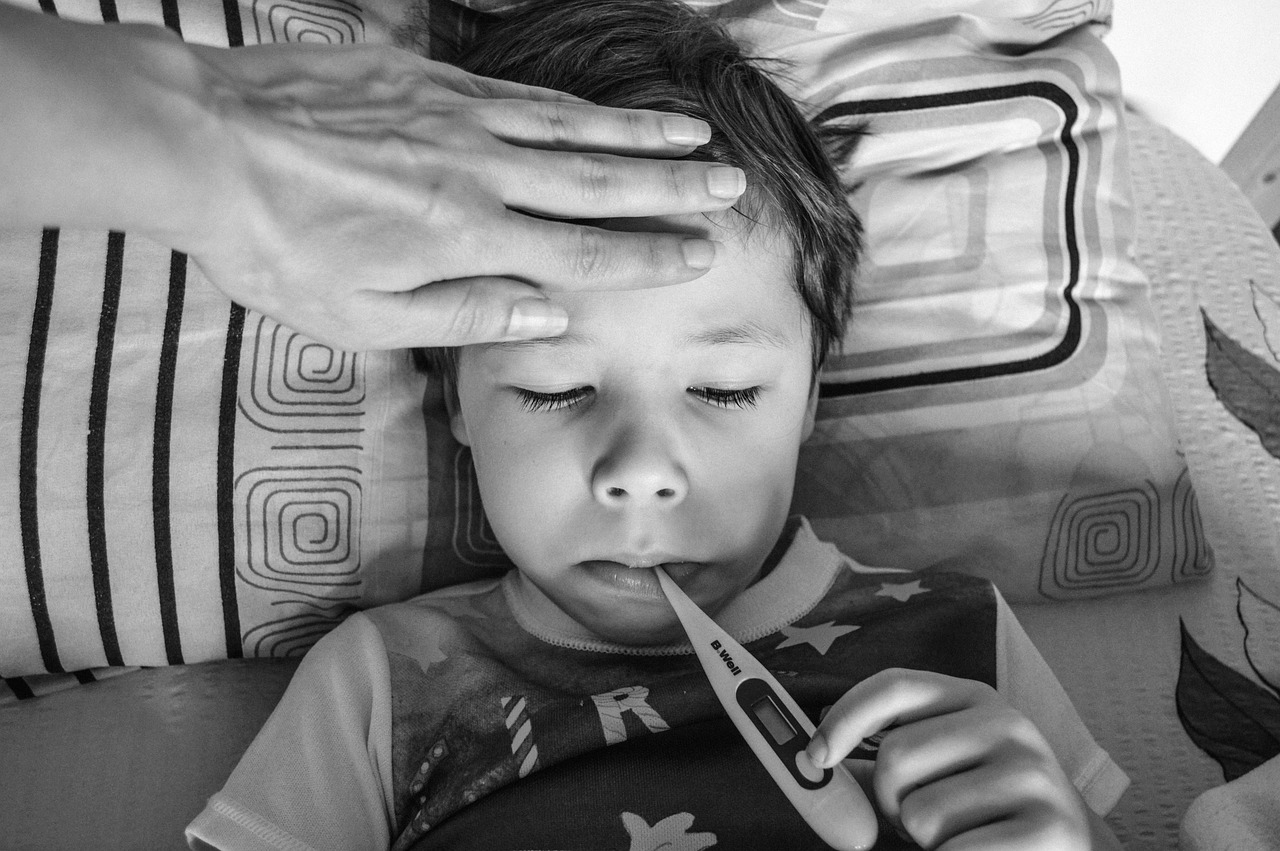
Support Services
When disaster strikes, the aftermath can be overwhelming, both physically and emotionally. It's essential to recognize that are available to help individuals navigate the tumultuous waters of trauma recovery. These services play a crucial role in guiding survivors through their healing journey, offering a lifeline during times of despair. From counseling to community programs, the variety of resources available can make a significant difference in how individuals cope with their experiences.
One of the most effective ways to access support is through professional counseling services. Trained mental health professionals, such as psychologists and licensed therapists, provide a safe space for individuals to express their feelings and process their trauma. These sessions can be tailored to meet the specific needs of the survivor, whether they are dealing with grief, anxiety, or post-traumatic stress disorder (PTSD). Moreover, many organizations offer sliding scale fees or free services to ensure that financial barriers do not prevent anyone from seeking help.
In addition to individual therapy, support groups can be incredibly beneficial. These groups create a sense of community among survivors, allowing them to share their stories and feelings in a supportive environment. Participants often find comfort in knowing they are not alone in their struggles. Such gatherings can be facilitated by mental health professionals or led by peers who have experienced similar trauma. The shared understanding within these groups fosters a unique bond, enabling individuals to support one another as they navigate their recovery.
Furthermore, many communities have established hotlines that offer immediate assistance and guidance. These hotlines are staffed by trained professionals who can provide emotional support and connect individuals with local resources. Whether someone needs someone to talk to or is looking for information on available services, hotlines can serve as a first step toward recovery.
It's also important to highlight the role of community programs in the recovery process. Local organizations often run workshops and events aimed at promoting mental wellness and resilience. These programs may include activities such as art therapy, mindfulness sessions, and group outings, which not only provide therapeutic benefits but also help rebuild social connections within the community. By participating in these initiatives, individuals can develop coping skills and foster a sense of belonging that is crucial for healing.
For those seeking more structured support, mental health clinics and hospitals offer comprehensive services, including assessments, medication management, and intensive therapy programs. These facilities are equipped to handle a range of mental health issues, ensuring that survivors receive the care they need. It’s essential for individuals to research and find the right fit for their needs, as the right support can significantly impact their recovery journey.
In summary, the availability of diverse support services is vital for disaster survivors. Whether through professional counseling, support groups, hotlines, or community programs, these resources provide essential assistance in the healing process. By taking advantage of these services, individuals can begin to reclaim their lives and work towards a brighter future.
- What types of support services are available for disaster survivors? Support services include counseling, support groups, hotlines, and community programs aimed at promoting mental wellness.
- How can I find a support group in my area? Many local organizations and mental health clinics offer support groups. A quick online search or contacting a mental health professional can help you find options nearby.
- Are support services free? Many organizations offer free or sliding scale services to ensure accessibility for all individuals, regardless of their financial situation.
- How do hotlines work? Hotlines provide immediate assistance and emotional support. Trained professionals are available to listen and guide individuals toward further resources.
- Can community programs really help with recovery? Yes! Community programs foster social connections and provide therapeutic activities that can greatly enhance the healing process.
Frequently Asked Questions
- What is trauma, and how does it affect individuals after a disaster?
Trauma is a psychological response to distressing events, such as natural disasters or accidents. It can manifest in various ways, including emotional numbness, anxiety, and intrusive memories. Understanding trauma is essential because it helps us recognize the profound effects it can have on both individuals and communities, leading to long-lasting psychological challenges if not addressed properly.
- What are common immediate psychological responses to a disaster?
After a disaster, people often experience immediate psychological responses like shock, denial, confusion, and heightened anxiety. These reactions are normal and can vary in intensity from person to person. Recognizing these feelings is crucial for providing support and understanding to those affected, as it helps normalize their experience and encourages them to seek help if needed.
- What is Acute Stress Disorder (ASD), and how does it differ from PTSD?
Acute Stress Disorder (ASD) occurs shortly after a traumatic event and can include symptoms like flashbacks, severe anxiety, and avoidance of reminders of the trauma. Unlike PTSD, which is diagnosed when symptoms persist for more than a month, ASD is a temporary condition that can resolve with appropriate support and intervention. Early recognition and treatment are vital for preventing the development of PTSD.
- What are the signs and symptoms of Acute Stress Disorder?
Signs of Acute Stress Disorder may include intrusive thoughts about the event, heightened emotional responses, irritability, and difficulty sleeping. Individuals might also experience physical symptoms like increased heart rate or gastrointestinal issues. Identifying these signs early can help in facilitating prompt support and intervention.
- What treatment options are available for individuals experiencing ASD?
Treatment for Acute Stress Disorder typically includes cognitive-behavioral therapy (CBT), which helps individuals process their trauma and develop coping strategies. Support groups can also be beneficial, providing a space for survivors to share experiences and feelings. Early intervention is key to helping individuals regain stability and move forward in their recovery journey.
- What are the long-term effects of unresolved trauma?
Unresolved trauma can lead to chronic mental health issues such as Post-Traumatic Stress Disorder (PTSD), depression, and anxiety disorders. These long-term effects can significantly impact an individual's quality of life, relationships, and overall well-being. It's essential to seek help early to mitigate these risks and promote healing.
- How does community support aid in recovery from disaster-related trauma?
Community support is vital for recovery as it fosters social connections and collective healing. When individuals come together to share their experiences, it can create a sense of belonging and reduce feelings of isolation. Strong social networks can enhance resilience, helping individuals cope better with their trauma and facilitating a smoother recovery process.
- What strategies can help build resilience after a disaster?
Building resilience can involve developing coping skills, maintaining strong social connections, and engaging in self-care practices. Encouraging open communication and providing emotional support within communities can also help individuals feel more empowered and capable of overcoming the challenges they face in the aftermath of a disaster.
- What mental health support services are available for disaster survivors?
Various mental health support services are available for disaster survivors, including counseling, hotlines, and community programs. These resources are designed to provide emotional support, guidance, and practical assistance. It's crucial for survivors to know that help is available and to reach out for the support they need during their recovery journey.



















